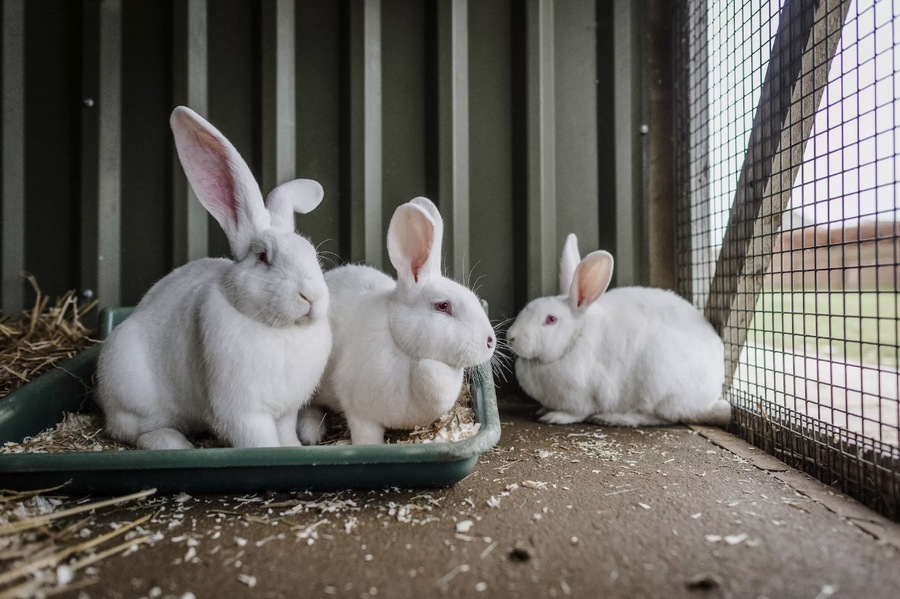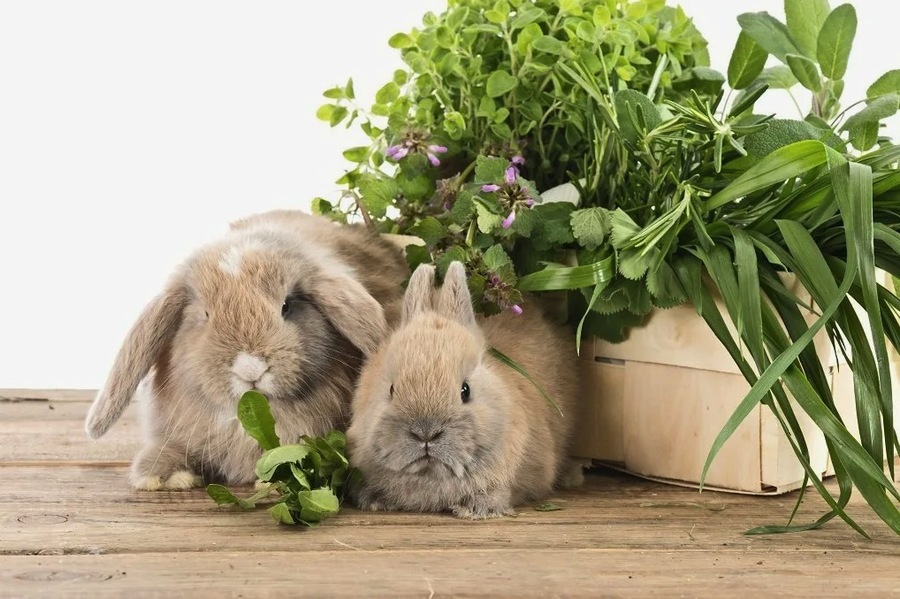Rabbits are small, furry mammals belonging to the family Leporidae, including rabbits and hares. These creatures are distinctive for their long ears, large hind legs adapted for bounding runs, and a reproductive strategy geared towards producing large litters of offspring. Domestic rabbits, however, are bred specifically for more docile traits and are often kept as pets due to their playful, friendly nature and the relative ease of caring for them compared to other pets like dogs and cats. Proper pet accommodation is crucial for maintaining their health and happiness.
Domestic Rabbits: Detailed Overview
Domestic rabbits have been selectively bred to emphasize traits that make them suitable for living in close proximity to humans. These traits include a range of fur textures, colors, and an overall temperament that is more relaxed and approachable than their wild counterparts. Unlike wild rabbits, which can live in a variety of outdoor environments, domestic rabbits are adapted to indoor life and often have dietary and environmental needs that their owners must carefully manage to ensure proper “pet accommodation.”
History of Rabbit Domestication
The domestication of rabbits is thought to have begun with the Romans, who valued them for food and fur. This practice evolved over the centuries, particularly during the Middle Ages, when monks in monasteries kept and bred rabbits extensively, marking the beginning of selective breeding for specific traits. However, it was during the Victorian era that keeping rabbits as pets became fashionable, leading to the development of various breeds through selective breeding. This period also saw the rise of rabbit shows and competitions, which further popularized rabbit breeding and refined the characteristics of different breeds, enhancing their suitability for “pet accommodation.”

Popular Breeds of Domestic Decorative Rabbits in the UAE
The UAE is home to a diverse array of domestic decorative rabbit breeds, each with unique characteristics and care needs. These breeds are cherished for their distinct appearances and temperaments, making them popular pets across the region. Here’s a closer look at some of the favored breeds:
Dwarf Ram
The Dwarf Ram, often referred to as the Mini Lop, captivates with its compact size and characteristic floppy ears that drape softly alongside its face, giving it an exceedingly affectionate appearance. Known for their gentle and amiable nature, Dwarf Rams are particularly adaptable to compact living conditions, such as apartments, making them perfect companions for urban dwellers. Their calm demeanor makes them easy to handle and suitable for families, even those with limited space.
Dwarf Hotot
The Dwarf Hotot is easily recognized by its striking, pristine white coat contrasted sharply by a distinct black ring around its eyes, giving it a dramatic and eye-catching look. This breed is known for its energetic and inquisitive nature, requiring ample mental and physical stimulation. Dwarf Hotots are playful and enjoy exploring their surroundings, making them well-suited for active families with children who can provide regular interaction and playtime.
Lionhead Rabbit
The Lionhead rabbit, named for its distinctive mane of fluffy fur encircling its head, resembles a miniature lion. This breed blends a friendly, outgoing personality with a dramatic physical appearance, making it a favorite among rabbit enthusiasts and pet owners alike. Lionheads are social animals that thrive on interaction and are known for forming strong bonds with their caretakers.
Dutch Lop-Eared Rabbit
Dutch Lops are beloved for their large, droopy ears and sweet, affectionate nature. They possess a calm and gentle demeanor that endears them to their owners, often forming a deep, affectionate bond. These rabbits are particularly sociable, enjoying the company of humans and other rabbits, which makes them excellent pets for families looking for a loving and interactive pet.
Hermelin (Polish Rabbit)
The Hermelin, also known as the Polish Rabbit, is a small breed characterized by its plush, white coat and friendly temperament. Known for its docility and ease of handling, the Hermelin is popular in both showrings and homes. This breed’s gentle nature makes it ideal for families and individuals seeking a cuddly and low-maintenance companion.
Dwarf Fox Rabbit
The Dwarf Fox Rabbit stands out with its luxurious, soft fur, which requires regular grooming to maintain its condition. This breed is playful and sociable, often seeking attention and interaction from its owners. Due to its need for regular grooming, the Dwarf Fox Rabbit is best suited for those who enjoy and are committed to the grooming process, providing a wonderful opportunity for bonding.
Short-haired Dwarf Rabbit (“Colored Dwarf”)
Known for its versatility, the Short-haired Dwarf Rabbit, or “Colored Dwarf,” comes in a variety of colors and patterns. Its short coat is particularly low maintenance, which appeals to first-time rabbit owners or those who prefer a pet that requires less grooming. This breed’s adaptability and ease of care make it an excellent choice for those new to rabbit ownership or those with busy lifestyles.
Diet of Domestic Decorative Rabbits
The diet of domestic rabbits should be fiber-rich, primarily consisting of high-quality hay which aids in digestion and dental health. Pellets provide essential nutrients that hay alone might miss, while fresh vegetables and occasional fruits can offer variety and additional vitamins. It is crucial to monitor the amount of sugary fruits and starchy vegetables fed to prevent digestive issues and obesity.
Living Conditions for Domestic Decorative Rabbits
Domestic rabbits thrive in environments that simulate aspects of their natural habitat while providing safety and comfort. Indoor living spaces should be spacious enough to allow for free movement, with areas designated for sleeping, eating, and elimination. Environmental enrichment, such as toys and hiding places, can help keep rabbits engaged and prevent boredom.
Health Care and Vaccinations for Domestic Rabbits
Vaccinations are crucial in safeguarding domestic rabbits from common viral diseases, such as Myxomatosis and Rabbit Hemorrhagic Disease, both of which can be fatal. Alongside vaccinations, regular health checks with a veterinarian can help catch and treat potential health issues early, contributing significantly to the rabbit’s overall health and longevity.

Basic Care Rules for Decorative Rabbits
Proper care for decorative rabbits includes:
– Cage Selection: Choosing a sufficiently large cage ensures that the rabbit can move freely and exhibit natural behaviors. The space should accommodate jumping and stretching without restriction.
– Cage Equipment: The cage should be well-equipped with a toilet area, a secluded spot for resting, and accessible spots for food and water to maintain cleanliness and order.
– Diet: Feeding a balanced diet rich in hay and supplemented with measured amounts of pellets and vegetables helps maintain health and prevent weight issues.
– Hygiene: Regular grooming, including nail trimming and coat brushing, is essential for the rabbit’s physical well-being and appearance.
– Exercise and Socialization: Providing regular opportunities for physical activity and interaction with humans or other rabbits is essential for emotional and physical health.
Conclusion
Domestic rabbits are delightful companions that bring joy and comfort to homes. With proper understanding and management of their specific care requirements—ranging from diet to living conditions and health care—owners can ensure their pet rabbits live happy, healthy lives.

Football fan, father of 3, fender owner, vintage furniture lover and New School grad. Making at the crossroads of art and function to create strong, lasting and remarkable design. Let’s make every day A RAZZLE-DAZZLE MUSICAL.
